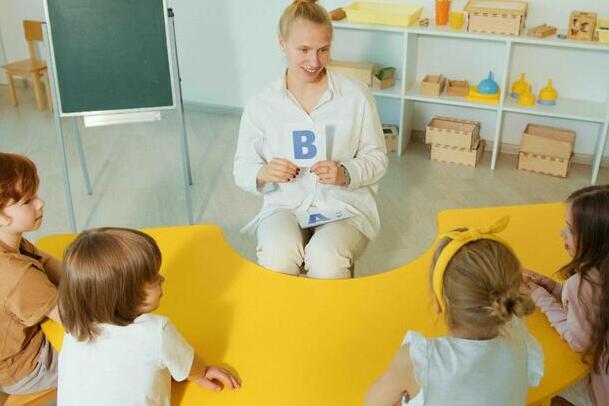U. of I. study: Teachers may need training to respond to children's emotions

Teachers learn a lot about how to teach curriculum in college, but they don't get much training in helping very young children learn to handle frustration, anger, and excitement, skills that kids need for kindergarten readiness, said Nancy McElwain, a University of Illinois professor of human development and family studies who conducted a study on the topic.
"When teachers aren't trained to respond to emotional outbursts in supportive ways, they often fall back on responses that reflect the way they were raised and whether they feel comfortable with their own emotions," said Rebecca Swartz, a doctoral candidate and the study's first author.
For the study, 24 student teachers in the U of I Child Development Laboratory (CDL) filled out self-assessments, rating their responses to hypothetical emotional situations and reporting their beliefs about the best ways to handle children's emotions.
These student teachers were then each observed several times interacting with children in the CDL classrooms over the course of a semester. From these observations, the researchers rated how the student teachers responded to the children's positive and negative emotional displays.
As expected, student teachers who reported more effective strategies for regulating their own emotions—for instance, thinking about a stressful situation in a different light—and who also reported more accepting beliefs about children's emotions were more supportive of children when they had emotional outbursts.
The most common non-supportive response was not responding. "Perhaps teachers were busy and didn't notice an emotional display or they needed a strategy to work through that difficult moment," she said.
Swartz wants teachers to learn emotional regulation strategies as part of their professional development so they can model them for children and manage challenging emotional moments in the classroom. "It might be effective to bring in a mentor who could coach, consult, and reflect with teachers as occasions arise," she said.
In the typical preschool classroom, it wouldn't take long for a mentor to find a teachable moment, she predicted. "In a classroom for two-year-olds, sometimes it's just emotion, emotion, emotion."
Instead of saying "Don't cry" or "That's not important," Swartz would like to see the teacher label the child's emotion and help him learn to cope with his anger or frustration.
"If a child is crying because a classmate has taken a toy, a better response would be, "I know you're sad. You really want to play with that." Then the teacher could use a problem-solving strategy: "Maybe you could take turns, or you could play with another toy for now."
According to Swartz, "These everyday moments are golden opportunities for children to learn how to manage their emotions. Too often, teachers want to make negative emotions go away. Instead we need to use them as learning opportunities."
Although it's important to support positive emotions—"we like to see teachers smile when children are smiling, and to give them pats on the back or high-fives"—the student teachers only sought the support of a master teacher in dealing with a child's negative emotion, she said.
But kids need help handling happiness and excitement, too, she noted. In those instances, teachers could say, "We can't throw blocks in the air to show we're excited, but we can clap or cheer instead."
Swartz emphasized that emotional self-regulation is important not only for kindergarten readiness, but for long-term success as children move into the higher grades.
"When you're sitting with a long-division problem, it's not just understanding long division that's important but being able to stick with it long enough to understand it. When children are building a block tower and managing their frustration, those skills will help them later," she said.
The study was published in a recent issue of Early Education and Development.